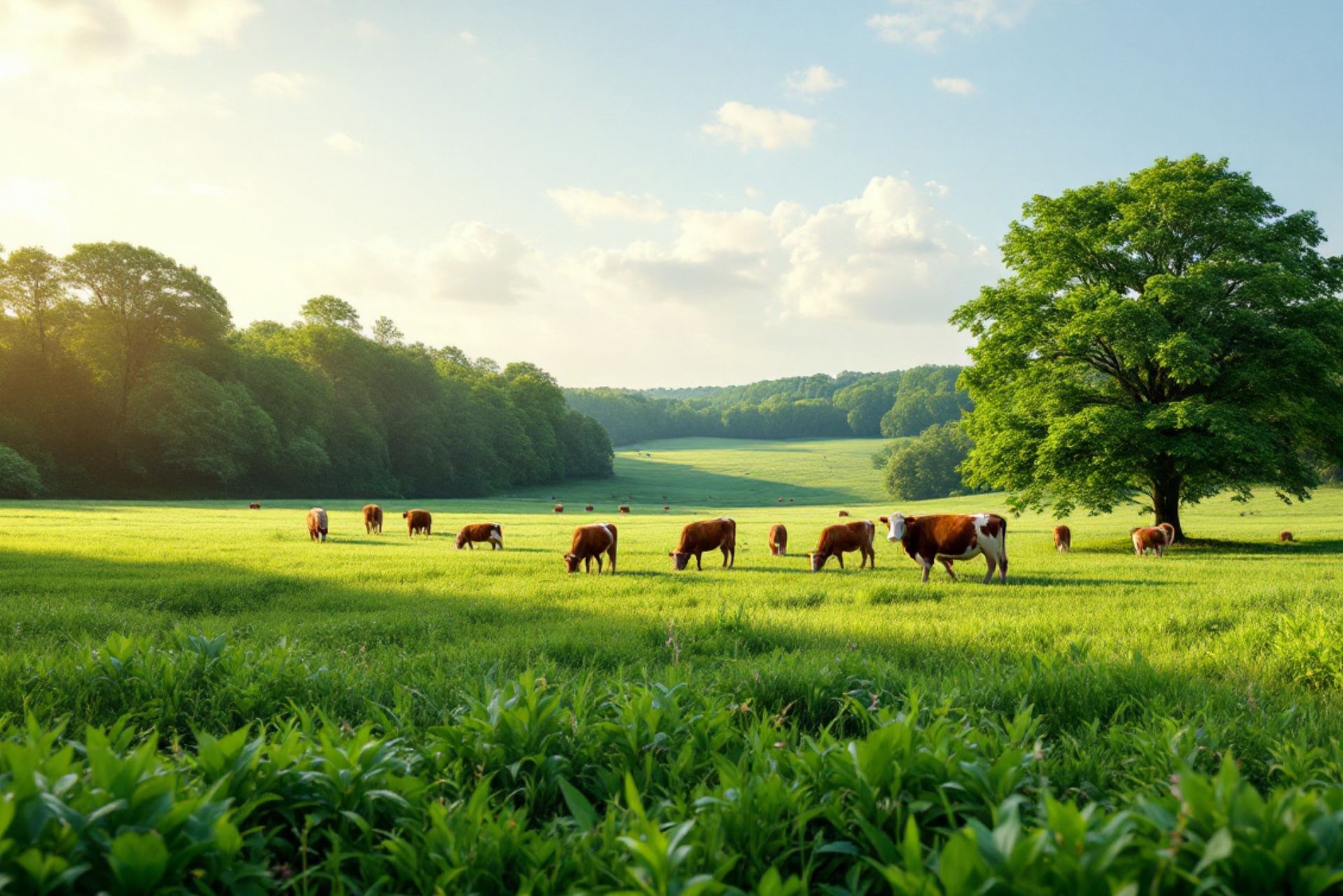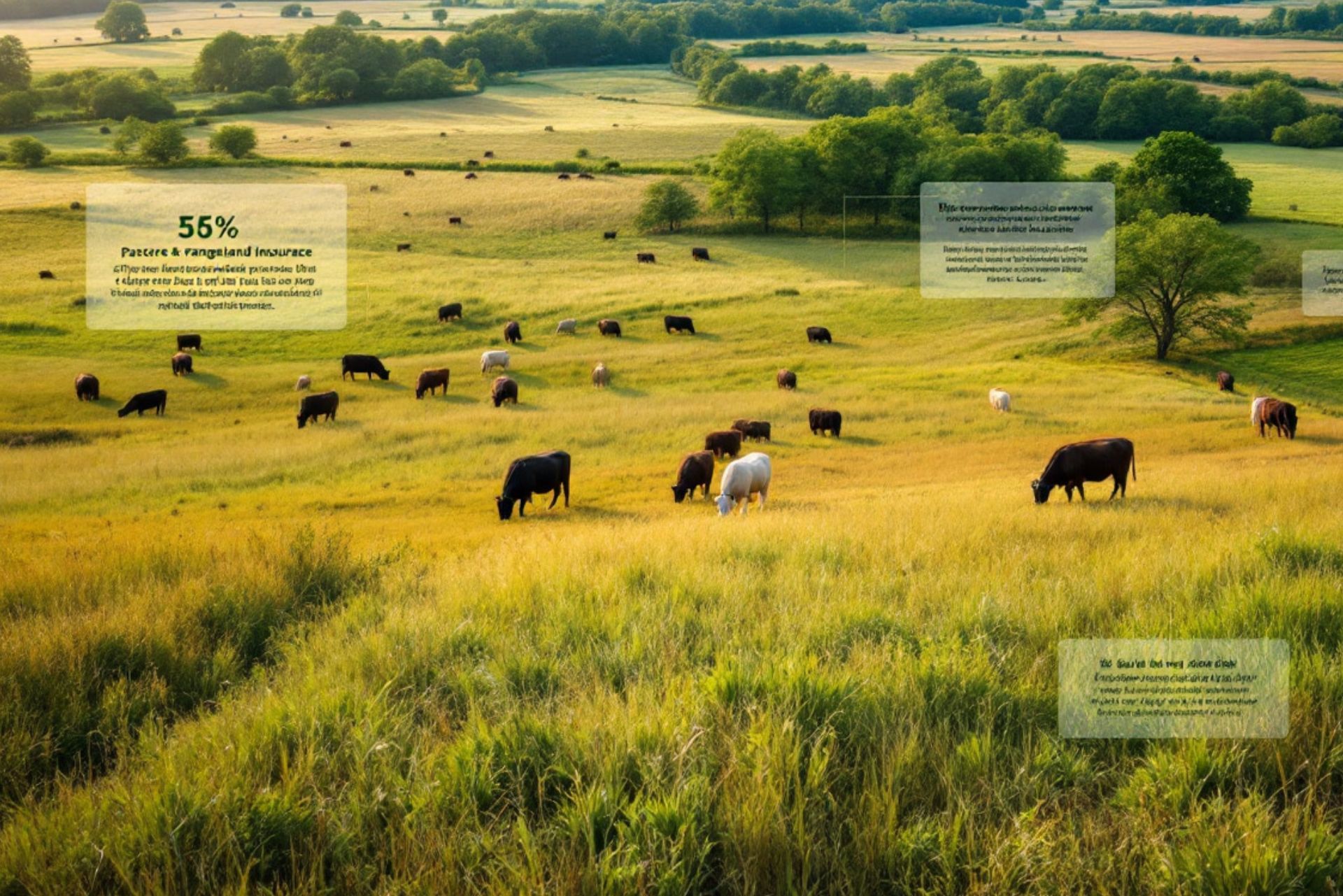Maryland Pasture, Rangeland, Forage Insurance
See How We're Different:
Call Us: 202-223-1506
Top 3 Recommended Business Policies
Index
Contact Us
Maryland's agricultural landscape is rich with opportunities, yet it is also subject to various risks that can impact the financial stability of farmers and ranchers. One of the most effective ways to protect pasture, rangeland, and forage resources is through specialized insurance programs. This article provides an in-depth look into Pasture, Rangeland, Forage (PRF) Insurance in Maryland, outlining its importance, coverage options, costs, application process, claims, and frequently asked questions.
Understanding the Basics of Pasture, Rangeland, Forage Insurance
Pasture, Rangeland, Forage Insurance is a federal program designed to offer financial protection to farmers and ranchers in the event of weather-related losses impacting their forage supplies. This insurance serves a crucial role, especially in regions susceptible to drought or excessive rainfall, which can severely affect the growth of pasture and forage crops. With the increasing unpredictability of weather patterns due to climate change, the significance of such insurance has become even more pronounced, as it helps ensure that farmers can continue to operate despite adverse conditions.
PRF insurance operates on a group of commodities within a defined area, making it particularly beneficial for those who manage large herds or extensive land. By understanding the various components of this insurance, farmers can better safeguard their livelihoods against Mother Nature’s unpredictability. Moreover, this insurance not only protects individual farmers but also contributes to the stability of the entire agricultural sector, allowing communities to thrive even in challenging conditions.
The Importance of Pasture, Rangeland, Forage Insurance
The importance of PRF insurance cannot be overstated. As climate patterns continue to fluctuate, farmers face mounting challenges in maintaining sustainable production levels. This insurance provides critical financial support during times of diminished yields, allowing them to recover and sustain their operations. In fact, many farmers report that having PRF insurance gives them peace of mind, enabling them to focus on improving their farming practices rather than worrying about potential losses from unforeseen weather events.
Additionally, the safety net provided by PRF insurance encourages farmers to invest strategically in their land and livestock, knowing they have a buffer against losses. This stability is essential not just for individual farmers, but also for the overall agricultural economy of Maryland. When farmers are financially secure, they are more likely to spend on local services and products, which in turn supports the broader community and creates a more resilient agricultural ecosystem.
Key Terms and Concepts in PRF Insurance
To navigate the Maryland PRF insurance program effectively, it is vital to familiarize oneself with specific terms and concepts that are commonly used. Some of the key terms include:
- Coverage Period: The timeframe during which insurance coverage is in effect, typically affected by seasonal weather patterns.
- Trigger Index: A measure that indicates when a payout occurs, usually based on precipitation levels within a specific area.
- Insurable Interest: The financial interest in the insured pasture, rangeland, or forage that can lead to a claim if lost.
Understanding these terms will empower farmers to make informed decisions about their insurance policies and their agricultural practices. Furthermore, being knowledgeable about these concepts can help farmers communicate more effectively with insurance agents and agricultural advisors, ensuring they receive the best possible coverage tailored to their unique circumstances. This proactive approach not only enhances their insurance experience but also strengthens their overall farm management strategies.

The Coverage Scope of Maryland PRF Insurance
Maryland PRF Insurance is designed to protect against specific weather-related perils, ensuring that farmers have the necessary resources to weather challenging conditions. It covers various aspects of forage production, key to maintaining healthy livestock. This insurance program is particularly vital in a state like Maryland, where fluctuating weather patterns can lead to unexpected dry spells, significantly impacting forage availability and, consequently, livestock health.
What Does Maryland PRF Insurance Cover?
The coverage primarily focuses on the loss of forage production due to insufficient precipitation during the coverage period. Specifically, it includes:
- The loss of pasture production for grazing animals.
- Loss of hay production that may be required for feeding livestock during dry periods.
- Financial compensation based on historical rainfall records and established indices.
This targeted coverage helps farmers manage the risks associated with unexpected shifts in weather patterns by providing a source of financial relief when it is most needed. Additionally, the program encourages farmers to adopt better water management practices and invest in drought-resistant forage varieties, ultimately leading to more sustainable agricultural practices.
Limitations and Exclusions of the Coverage
While PRF insurance offers significant benefits, it is essential to understand that it does have certain limitations and exclusions. For instance, coverage does not extend to losses caused by pests, diseases, or market fluctuations. Farmers must also be aware that normal weather patterns are considered when determining losses, so insurance payouts may vary significantly from year to year. This variability can create challenges for farmers who rely heavily on predictable income streams to sustain their operations.
Furthermore, coverage is generally limited to certain types of forage crops, which can exclude specific plants or methods of grazing management from coverage. Understanding these exclusions allows farmers to assess their insurance needs comprehensively and make necessary adjustments to their cropping systems. It is also advisable for farmers to stay informed about changes in policy and available options, as the agricultural landscape is continually evolving. Engaging with local agricultural extension services can provide valuable insights into best practices and innovative strategies that can enhance resilience against climate-related challenges.
The Cost of PRF Insurance in Maryland
Evaluating the cost of PRF insurance is a crucial step for farmers looking to integrate it into their risk management portfolio. Various factors impact the premium rates, which can fluctuate based on individual circumstances and broader market trends.
Factors Influencing the Cost of PRF Insurance
Several factors influence the cost of PRF insurance in Maryland, including:
- Coverage Level: Higher coverage levels correspond to higher premiums, requiring a careful balancing of risk tolerance and financial capacity.
- Location: Geographic regions have different historical rainfall patterns, which can affect premium costs.
- Farm History: The past production history and previous claims can also lead to different premium calculations.
Farmers should take time to analyze these factors with crop insurance agents to ensure they choose the most cost-effective coverage options for their needs. Understanding the unique climate and soil conditions of their specific region can also provide insights into how these elements interact with the insurance offerings. For instance, areas prone to drought may see higher premiums due to the increased risk associated with insufficient rainfall, while regions with more consistent precipitation may enjoy lower rates.
How to Estimate Your PRF Insurance Premiums
Estimating PRF insurance premiums can seem daunting, but there are resources available to simplify the process. The Risk Management Agency (RMA) provides tools and calculators that allow farmers to input their specific data and receive estimates based on current rates.
Additionally, consulting directly with
insurance agents who specialize in agricultural insurance can yield personalized insights. By understanding their production history and assessing various risk factors, farmers can create a tailored approach to insurance that aligns with their financial goals. Furthermore, engaging in workshops or informational sessions offered by agricultural extension services can enhance farmers' understanding of PRF insurance. These programs often cover the intricacies of policy options, the claims process, and the importance of maintaining accurate records, which can ultimately lead to more informed decisions and potentially lower premiums over time.
The Process of Applying for PRF Insurance in Maryland
Once a farmer has determined that PRF insurance is a suitable option, the next step is to navigate the application process. This process is crucial for gaining the protection offered by PRF insurance and requires careful attention to detail. Understanding the nuances of the application can significantly impact the level of coverage and the financial safety net it provides against unforeseen weather events.
Eligibility Criteria for PRF Insurance
To qualify for PRF insurance, farms must meet specific eligibility criteria. Generally, these may include:
- The completion of a farm operating plan that includes forage crops.
- Record-keeping of production history related to the insured forage types.
- Compliance with local and federal agricultural regulations.
Confirming eligibility early can streamline the application process, so farmers should thoroughly review these requirements before proceeding. Additionally, it is beneficial for farmers to engage with local agricultural extension offices or cooperative services, which can provide valuable insights and assistance in understanding the eligibility criteria. This proactive approach can help identify any potential gaps in documentation or compliance that could hinder the application process.
Steps to Apply for PRF Insurance
The application process for PRF insurance typically involves several steps:
- Gather necessary documentation, including production records, historical rainfall data, and relevant farm operating plans.
- Consult with an insurance agent to review options and determine the appropriate coverage level.
- Complete the application forms and submit them before the established deadlines.
- Review and confirm policy details once the application is approved, ensuring all coverage specifics align with the farmer's needs.
By following these steps carefully, farmers can ensure that they are adequately covered for potential forage losses. Moreover, it is crucial to stay informed about any updates or changes in PRF insurance policies that may arise annually, as these can affect coverage options and premiums. Farmers should also consider participating in workshops or webinars offered by agricultural organizations that focus on risk management strategies, which can enhance their understanding of how to maximize the benefits of their PRF insurance policy.

Claiming Your PRF Insurance Benefits
Understanding how to claim benefits under the PRF insurance policy is critical for maximizing the coverage's utility. Farmers must be prepared to provide evidence of loss and follow the correct procedures for filing claims. This preparation not only ensures that farmers receive the compensation they deserve but also helps them navigate the often complex landscape of agricultural insurance.
When and How to File a Claim
The claim can be filed as soon as losses are confirmed, often based on deviations from expected precipitation levels. Farmers need to document all relevant information, which may include rainfall data and photographic evidence of affected areas. It is advisable to maintain a detailed log of weather conditions and any changes observed in crop health, as this can significantly bolster a claim. Additionally, utilizing tools such as weather tracking apps can provide real-time data that supports the claim process.
Claims are typically submitted electronically or through physical forms, with specific deadlines mandated by the RMA. Keeping a close eye on timelines and documentation helps ensure a smoother claims process. Farmers should also consider reaching out to their insurance agents for guidance, as these professionals can provide valuable insights into the nuances of the filing process and help clarify any uncertainties regarding required documentation.
Understanding the Claim Settlement Process
The claim settlement process can vary based on the individual circumstances of the claim. After filing, the insurance provider conducts an investigation to assess the validity of the claim, utilizing rainfall data and other evidence provided by the farmer. This investigation may involve site visits by adjusters who will evaluate the extent of the damage and corroborate the information submitted. Farmers should be prepared for this step by ensuring that their fields are accessible and that they can provide any additional information requested during the assessment.
Once the investigation is complete, the insurance provider will offer a settlement based on the findings. Farmers should understand their rights and be prepared to appeal any decisions they feel do not accurately reflect their losses. It’s essential to familiarize oneself with the appeals process, as it can vary by provider and may require additional documentation or evidence. Engaging with local agricultural organizations or legal advisors can also provide support during this phase, ensuring that farmers are well-equipped to advocate for their interests and secure the benefits they are entitled to under their PRF insurance policy.
Frequently Asked Questions About Maryland PRF Insurance
As farmers explore PRF insurance, numerous questions may arise. Addressing these common inquiries can help clarify critical aspects of the program.
Common Misconceptions About PRF Insurance
There are many misconceptions surrounding PRF insurance. For example, some farmers mistakenly believe the insurance covers all losses related to crop failure. However, it only covers weather-related losses due to precipitation deficits. Additionally, some believe that the premiums are fixed and cannot be adjusted, which is not the case.
Understanding the nuances of the insurance can lead to better decision-making and preparedness in managing agricultural risks. Moreover, many farmers are unaware that PRF insurance can be tailored to their specific needs, allowing them to choose coverage periods that align with their operational cycles. This flexibility can be crucial in ensuring that farmers are not overpaying for coverage during periods when their forage is not at risk.
Expert Tips for Maximizing Your PRF Insurance Benefits
To maximize benefits from PRF insurance, farmers should consider the following tips:
- Maintain detailed records of production and historical weather patterns to provide necessary documentation during claim processes.
- Evaluate risk exposure regularly and adjust coverage levels accordingly to match changing conditions.
- Engage with local agricultural extension services or insurance agents for expert advice tailored to specific farm operations.
By implementing these strategies, farmers can improve their chances of effectively leveraging their PRF insurance and mitigating risks associated with forage production in Maryland. Additionally, farmers should stay informed about any changes in federal policies or subsidy programs that may impact their insurance options. Participating in workshops or informational sessions can also provide valuable insights into best practices and emerging trends in agricultural insurance, further enhancing their ability to navigate the complexities of PRF insurance.
For over 40 years D.H. Lloyd & Associates has provided commercial insurance solutions covering multiple facet of business risk.
QUICK LINKS
CONTACT US
Phone:
202-223-1506
Email: contactus@dhlloyd.com
Address: 1625 K St NW, Washington, DC 20006, United States
All Rights Reserved | D.H. Lloyd & Associates | Privacy Policy | Legal Disclaimer | Sitemap | Built & SEO'd by Convirtue

